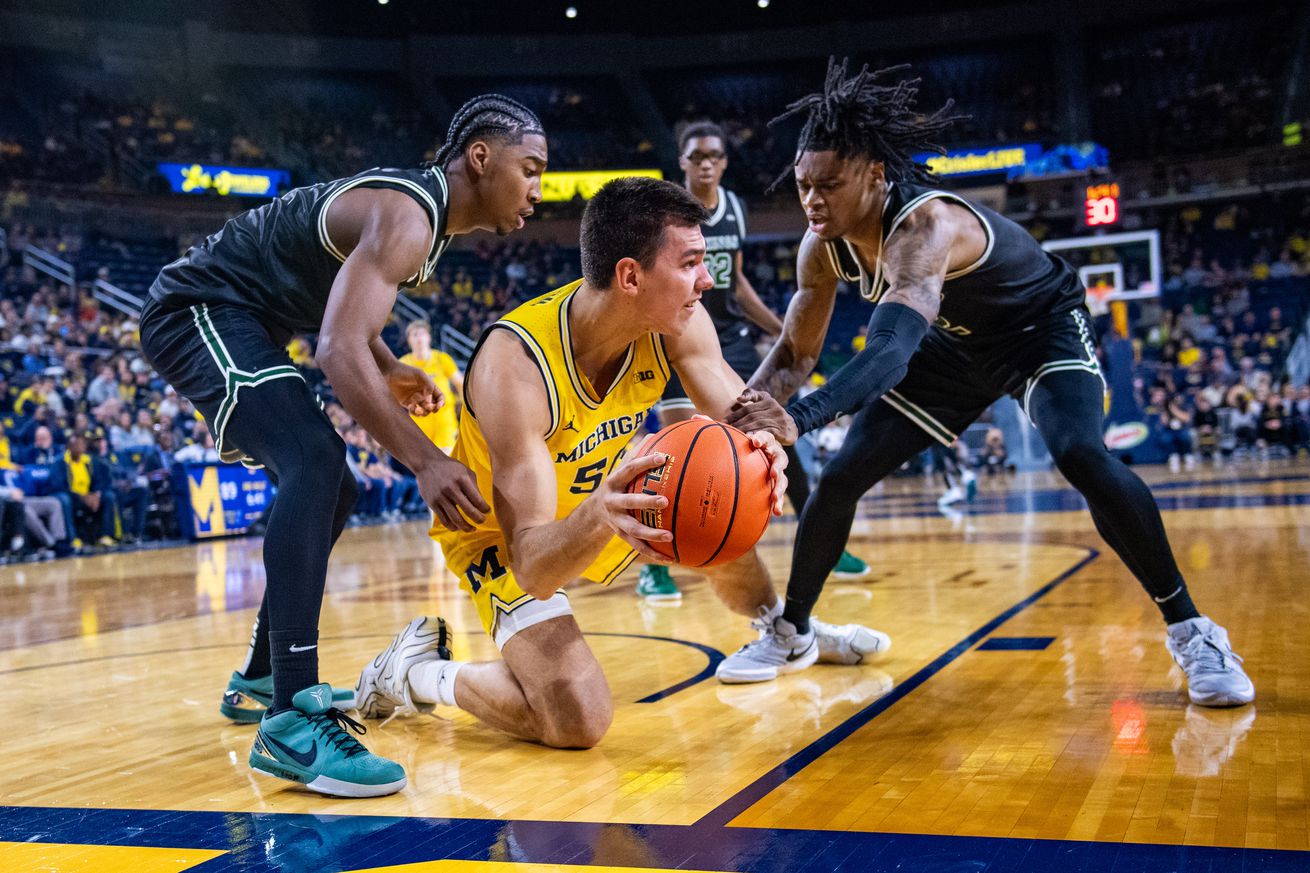
Dusty May wanted Michigan to be challenged this fall, with Wake Forest just the tip of the iceberg. History can tell us how well the Wolverines must do in its non-conference contests to set itself up for success:
After inheriting a dumpster fire that was 8-24 last season and has missed the NCAA Tournament two years in a row, Dusty May’s first turn at the helm comes with realistic expectations. Still, the current state of college sports — and basketball, in particular — makes dramatic turnarounds anything from doable to commonplace.
That means the Michigan Wolverines have their eyes set on a return to March Madness despite May having to bring an entirely new roster. May was not interested in easing through November and December, though; he wants his brand new roster to face the flames head on. This will likely come with some defeats, as was the case on Sunday, but this non-conference schedule should pay dividends as the year goes on.
In addition to Wake Forest , Michigan will see five more Power Five schools this fall: TCU, Virginia Tech and either South Carolina or Xavier in the Fort Myers Tip-Off, Arkansas at Madison Square Garden, and Oklahoma in the Jumpman Invitational. These are all top-100 Kenpom teams, with a few expected to be top-50 competition. May wanted his team to be truly tested, and he is absolutely making that happen.
Three-piece puzzle
Really, these six games are just one of three main components of a basketball schedule. Michigan obviously needs to sweep its five mid-major contests; recent losses to Central Michigan, Long Beach State, and McNeese State proved to be major warning signs, even if some of those schools were much better than expected.
Then there is the the conference slate against a loaded (or bloated?) Big Ten. While no team is looking elite, a whopping 13 (!!) are currently in the Kenpom top 50, and just a friendly reminder that Michigan draws Purdue twice. Kenpom projects the Wolverines as 11-9 in conference play, while Torvik says 10-10. With so many teams looking very similar in quality, it will be difficult to break out of this pack.
That is why the top non-conference games are so meaningful. Even with most of them being neutral site contests, Michigan will see its NET ranking benefit from any victories in a meaningful way. Failing to capitalize, though, is going to make the 20-win threshold difficult, with a possible battle on the bubble awaiting. If fellow Big Ten teams end up with better non-conference resumes, that could be damaging as well in comparison.
Looking to the past
No one needs a reminder, but Juwan Howard really struggled in these types of games, going a shocking 3-11 against Power Five competition in the last four falls. His only impressive start to the season was the first one with the trophy in Atlantis, though the 2019-20 team would then fall to Louisville and Oregon after beating Creighton early on.
Though that first roster under Howard was much different than May’s current group of transfers, it certainly stands out that his successful teams played well early in the year, while his lost seasons were apparent right away as well. There is some argument as to which causes which, but either way, Michigan fans should be a little weary if the team goes just 2-4 (or worse) in this slate.
John Beilein’s teams did occasionally stumble early too, with the 2011-12 team going 3-3 in these types of games, the 2013-14 team going 2-3, and the 2017-18 squad splitting 2-2. All three teams ended with top-four seeds in the NCAA Tournament, but all went 13-5 or better in conference play. With how the Big Ten is looking early on, this seems like a dangerous path to walk, so logging wins early is a must.
Setting the target
What this means to me is Michigan needs to find a way to at least go 3-3 in these six games, but really 4-2 feels like the goal. I know that looking at just six games — in November and December, no less — feels a little dramatic, but it is so easy to see how the Wolverines could be looking back in regret because of how packed the Big Ten schedule is. Non-conference games always stand out on a resume, and even though we are months away from March, they are still vitally important.
That makes TCU at home a near must-win, and really Virginia Tech should be too. Going over .500 in the other three will be tough, but the new Michigan roster will at least have nine games under its belt before facing Arkansas and Oklahoma. By the way, those early Big Ten contests are a rough draw (at Wisconsin, vs. Iowa), but there is a little more wiggle room with 20 conference games on the schedule.
Of course, these early battles against Power Five teams have plenty of other benefits too. Reps are crucial as the team grows in its chemistry and communication and May looks to cement in his system, and the Wolverines should be expected to improve as the year goes on. Unfortunately, there is still a need for immediate performance, and the loss to Wake Forest should elevate the concern a tick. Maybe none of these individual games are do-or-die, but how Michigan performs over the next month is going to have a major bearing on where this season ends up in March.
